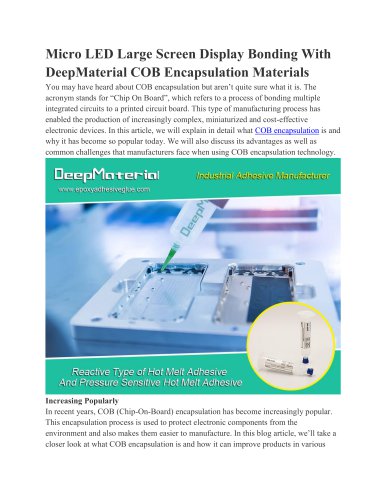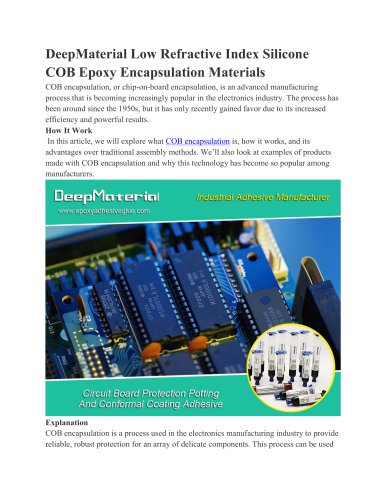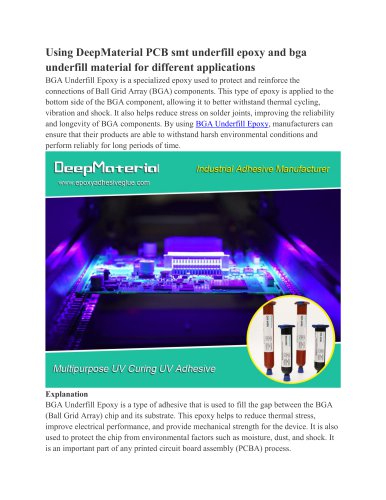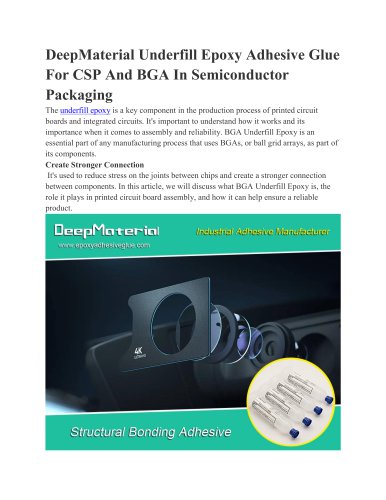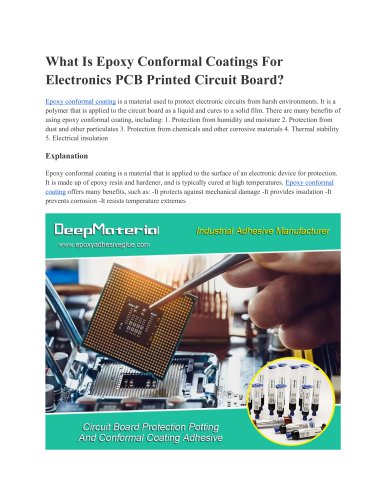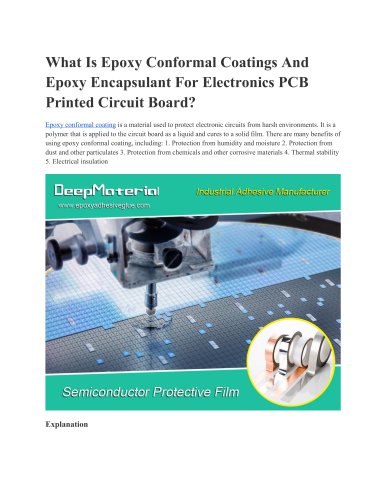
Catalog excerpts
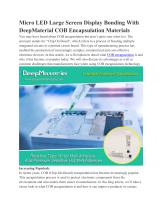
Micro LED Large Screen Display Bonding With DeepMaterial COB Encapsulation Materials You may have heard about COB encapsulation but aren’t quite sure what it is. The acronym stands for “Chip On Board”, which refers to a process of bonding multiple integrated circuits to a printed circuit board. This type of manufacturing process has enabled the production of increasingly complex, miniaturized and cost-effective electronic devices. In this article, we will explain in detail what COB encapsulation is and why it has become so popular today. We will also discuss its advantages as well as common challenges that manufacturers face when using COB encapsulation technology. Increasing Popularly In recent years, COB (Chip-On-Board) encapsulation has become increasingly popular. This encapsulation process is used to protect electronic components from the environment and also makes them easier to manufacture. In this blog article, we’ll take a closer look at what COB encapsulation is and how it can improve products in va
Open the catalog to page 1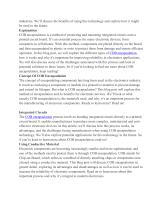
industries. We’ll discuss the benefits of using this technology and explore how it might be used in the future. Explanation COB encapsulation is a method of protecting and mounting integrated circuits onto a printed circuit board. It’s an essential process for many electronic devices, from computers to cell phones. With this method, components are placed directly on the board and then encapsulated in plastic or resin to protect them from damage and ensure efficient operation. In this blog post, we will explore the different types of COB encapsulation, how it works and why it's important for...
Open the catalog to page 2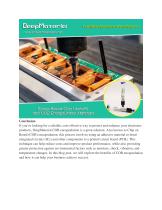
Conclusion If you’re looking for a reliable, cost-effective way to protect and enhance your electronic products, DeepMaterial COB encapsulation is a great solution. Also known as Chip on Board (COB) encapsulation, this process involves using an adhesive material to bond integrated circuits (ICs) and other components to a printed circuit board (PCB). This technique can help reduce costs and improve product performance, while also providing greater protection against environmental factors such as moisture, shock, vibration, and temperature changes. In this blog post, we will explore the...
Open the catalog to page 3All Shenzhen DeepMaterial Technologies Co. catalogs and technical brochures
-
SMT Epoxy Adhesive
3 Pages
-
SMT Epoxy Red Adhesive
3 Pages
-
PCB Potting Compound
3 Pages
-
Magnet Bonding Adhesives
3 Pages
-
Functional Protective Film
3 Pages
-
DeepMaterial Epoxy-Based
3 Pages
-
BGA Underfill Epoxy
3 Pages
-
UV curable adhesive
3 Pages
-
UV Conformal Coating
3 Pages
-
Underfill Epoxy BGA
3 Pages
-
Two component Epoxy Adhesive
4 Pages
-
PUR Structural Adhesive
3 Pages
-
Epoxy Encapsulant
3 Pages
-
Waterproof adhesive glue
4 Pages
-
SMT SMD epoxy adhesive
4 Pages
-
Optical bonding adhesive
4 Pages
-
Hot melt adhesive glue
4 Pages
-
Magnet bonding adhesives
4 Pages
-
LCD optical bonding adhesive
4 Pages
-
Best epoxy adhesie for metal
4 Pages
-
UV Curing UV Adhesive
13 Pages
-
Structural Bonding Adhesive
10 Pages
-
Functional Protective Film
3 Pages

